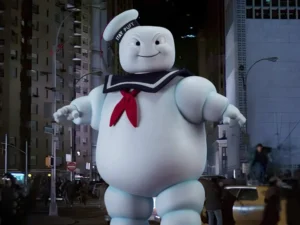The AI-Driven Hiring Loop: Are We Headed for an Endless Cycle of Perfect Job Descriptions and Tailored Resumes?
Picture this future: You visit an online job board to find your next opportunity. Every job description you read seems flawlessly crafted—no awkward phrasing, no unclear expectations, and every requirement spelled out with precision. Each posting feels as if it’s speaking directly to you, highlighting exactly the skills you possess and the career path you want. It’s not a coincidence. On the other end of the spectrum, candidates now submit impeccably tailored resumes, each word strategically chosen by advanced AI-driven content generators to match the role’s keywords, company culture, and compensation level. Both the employer and the candidate appear perfect for one another, curated and optimized by algorithms rather than human intuition.
But what happens when everyone is playing by the same rules?
In this scenario, the job market turns into a perpetual AI arms race. Companies use AI tools to produce the most enticing job postings possible. These postings are enriched with persuasive language, data-backed keyword strategies, and automated personalization. Job seekers counter with their own AI-driven resumes, each flawlessly mirroring the company’s demands. Suddenly, the traditional cues that help employers and candidates find genuine alignment disappear beneath layers of algorithmic polishing.
The Rise of the Perfect Job Posting
As more businesses adopt generative AI to write job descriptions, we’ll likely
see a convergence of style and substance. Today, a poorly written job
description might deter a candidate, but in the near future, the baseline will
be excellence. Every job will “sound” perfect, making it difficult for
candidates to differentiate one opportunity from the next. The standardization
will get so high that job postings may start to feel almost interchangeable.
The emotional resonance of a unique company voice, or the implicit hints about
internal culture that once set firms apart, could vanish into a homogenized
stream of expertly engineered AI prose.
The Counter-Move: Perfectly Tailored Resumes
On the flip side, imagine you’re a candidate. You once spent hours fine-tuning
a resume, agonizing over word choice and formatting. Now, with a few prompts in
an AI tool, you can generate dozens of personalized resumes, each custom-tuned
to a specific posting. The resume is always spot-on: it uses the recruiter’s
keywords, mirrors the tone of the job description, and aligns your experience
precisely with the required skill sets. When every candidate does this, though,
the employer struggles to distinguish authentic excellence from well-crafted
illusions.
The Collapse of Traditional Screening Methods
This AI-driven parity creates a paradox. If every job description and resume is
so well-tailored that it’s impossible to discern true fit, how do hiring
managers and recruiters choose whom to interview? Equally, how do candidates
differentiate among nearly identical job postings?
In such a future, relying solely on keyword matches and static job boards becomes obsolete. The tools we have today—Applicant Tracking Systems (ATS), keyword filters, and job board listings—might fail to provide meaningful signals when everything is polished to an identical sheen.
A New Era of Dynamic Hiring Processes
As this AI-driven loop tightens, we may see the emergence of new processes and
platforms designed to break the cycle. Some possibilities include:
1. Gamified Assessments: Instead of reviewing resumes and job descriptions, companies might assess candidates through interactive simulations, role-specific challenges, or problem-solving tests that can’t be “gamed” by AI-generated copy. This moves hiring away from passive textual representations and toward active demonstration of skills.
2. Cultural Fit Interviews via AI-Enabled Video Platforms: AI may also be used to analyze subtle cues in video responses. Instead of relying on text-based resumes and listings, both parties might engage in asynchronous video interviews that require real-time thinking and genuine human input.
3. Blockchain-Verified Credentials: Credentials, past employment verifications, and skill certifications might be stored on secure, tamper-proof ledgers. This would ensure that while resumes can still be AI-polished, the fundamental truths about a candidate’s background and skill sets remain transparent.
4. Data-Driven Matching Algorithms: New platforms may arise that match candidates and companies based not on static descriptions, but on dynamic data sets—such as demonstrated problem-solving sessions, personality assessments, and long-term career analytics. These would be harder to “spoof” with a polished resume or job listing.
Reinvigorating Authenticity
This isn’t a call to abandon AI—far from it. Rather, it’s about acknowledging
that as AI proliferates, it will challenge our existing frameworks and force us
to evolve. When everyone wields the same generative writing tools, authenticity
and differentiation must come from something other than polished language.
Genuine skill demonstrations, transparent credentials, humanized interviews,
and richer platforms that focus on fit rather than flourish will define the
next era.
Looking Ahead
The cycle of perfect AI-generated job descriptions and resumes is not only
possible; it’s already unfolding. But where does it end? It ends when we
collectively recognize the limitations of text-based matchmaking and build
hiring ecosystems that value proof of ability, character, and culture over
synthetically perfected prose.
In the future, job seekers and employers will adapt to new digital landscapes and inventive hiring processes that restore substance to the forefront. As we stand on the cusp of this shift, the question isn’t whether we’ll need new methods—but which ones will rise to the occasion.


